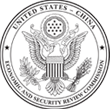Search Results
Trade Bulletin
Sector focus – Market barriers to U.S. drugs, medical devices, and medical services
Research
A U.S.-China Bilateral Investment Treaty (BIT) is unique among other existing BITs insofar as it will have to balance the interests of two world powers that are both capital-importing and capital-exporting nations. It will not only determine future investment relations between the world’s two biggest economies, but will also set the precedent for U.S. investment relations with other major developing countries. While a U.S.-China BIT could potentially unlock sizable benefits, a number of significant challenges—many of which are unique to China’s involvement—complicate the debates around a prospective U.S.-China BIT. This report briefly summarizes each country’s history with BITs, identifies potential challenges in moving forward with negotiations, and highlights potential implications of the U.S.-China BIT for the United States. Drawing on the 2012 U.S. Model BIT, the evolution of China’s BIT practice, and China’s 2012 BIT with Canada, this report concludes by discussing a number of questions U.S. policymakers should consider.
Research
The report provides an assessment of China’s state plans for civilian and defense-related science and technology, industrial, and energy development and their economic and security implications for the United States. The authors are Tai Ming Cheung, Thomas Mahnken, Deborah Seligsohn, Kevin Pollpeter, Eric Anderson, and Fan Yang, writing for the University of California Institute on Global Conflict and Cooperation.
